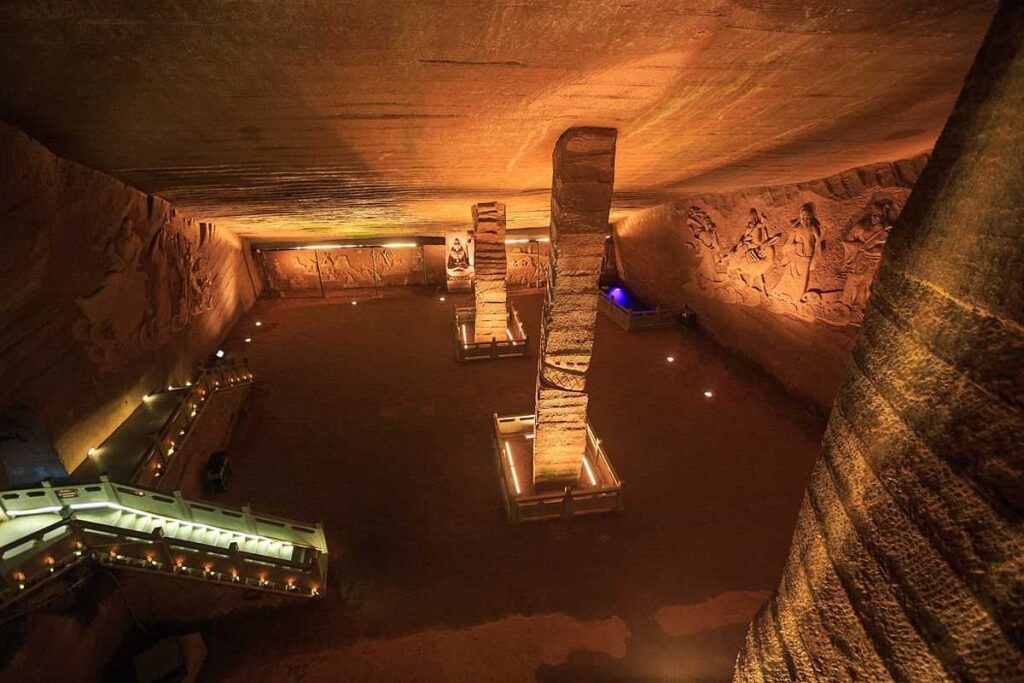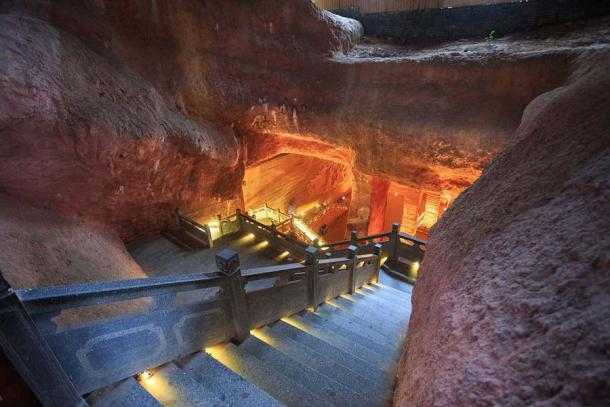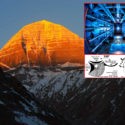China’s Longyou Caves: Ancient Underground World That Has No Historical Record
The “Longyou Caves” are an enigmatic and fantastic discovery made in China after the Great Wall and the Tomb of the Emperor of the Qing Dynasty. There is no historical record of these caverns and no information about their origin in the texts. They are a set of 24 enormous artificial sandstone caverns on Phoenix Hill, near the village of Shiyanbeicun on the Qujiang River in Longyou County, Quzhou, Zhejiang province, China.
The caves are one of the giant constructions ever uncovered in human history, dating back to about 2,000 years before the Qin Dynasty was founded in 221 BCE. They do, however, constitute a genuine problem that has perplexed scholars ever since.

Despite the efforts of archaeologists, engineers, architects, and geologists worldwide, no one has been able to determine how, by whom, or why they were created. They were first discovered in 1992 by a local villager who set out to drain some ponds that the inhabitants thought were bottomless. There were many ponds or rocky pools in the area of Shiyanbeicun that were said to be “bottomless,” with depths that seemed to go on forever; there were also ponds without fish. The townspeople decided to put the rumor to the test by draining a pond with a hydraulic pump, only to find that the ponds were flooded with ancient artificial tunnels.
Longyou Caves span a 30,000-square-meter region, with each cave measuring roughly 30 meters deep. Rooms, bridges, ditches, and pools can be found in each cave. Siltstone pillars support the constructions, and everything is adorned with chisel motifs of parallel lines. Only one of the caverns has been opened to tourists and is open to the public, decorated with donkey figures, a bird, and a fish.
For the development of Longyou Caves, an estimated one million cubic meters (35,314,666 cubic feet) of rock had to be excavated. A simple estimate shows that about 1000 workers would be necessary to work 24 hours a day, seven days a week for six years to complete the excavation, which is rather astounding.

The most remarkable aspect of the site is that no tools of any type have been discovered, which could explain the caves’ flawless symmetry, precision, and uniformity. They are also absent from historical records and are not recorded in any manuscripts, as if they were a secret. It’s also impossible to say what happened to the million cubic meters of mined rocks or where they went.
Another enigma is the parallel lines etched into the caverns’ walls, covering every inch of the caves in a perfect and symmetrical design. It must have taken a massive workforce to produce something like this. What was the purpose of all the chiseled walls?
The only indication is that they look a lot like the decoration on some pottery objects in the local museum from 500 to 800 BC. When they were discovered, the caves were full of water, which had to be removed, revealing the artificial structures. They were first assumed to be artificial ponds for fish farming. However, all of the water had been removed, and no evidence of fish or other types of life could be found.
Surprisingly, the caves, which cover only one square kilometer below ground, are not connected. Although they are adjacent, there is no means to get from one to another. Even though some of the cave walls are only 50 cm thick and, as previously said, the majority of the caverns are identical in every way.
According to Yang Hongxun of the Chinese Academy of Social Sciences’ Archaeological Institute, the ancient builders would be unable to see what the others were doing in the adjacent grotto from the bottom of each cave.

However, the interiors of each cave had to be parallel to each other, or else the walls would have been pierced during construction. As a result, the measurement instruments had to be quite sophisticated. There must have been some planning done regarding cave size, location, and distances ahead of time.
Modern measurements have shown that the walls are precisely the same thickness in different locations. It’s still a wonder how they were able to accomplish such precision. Finally, a ‘logical’ explanation for its employment has been unable come up with. Some speculated that these were massive mausoleums, but no tomb had been discovered. Others claim they were mines, but why would they have the trouble of meticulously decorating some mines?
Any savage tribe did not create these caverns. Their design was standardized and meticulously planned ahead of time. It was created by a highly advanced culture using exact techniques. Aside from that, the caverns have an exciting shape—a vertical shaft, or gateway, with steps leading downwards provided access. Rock pillars supported the slanted ceiling.



